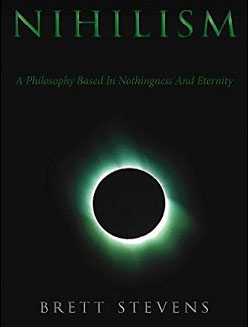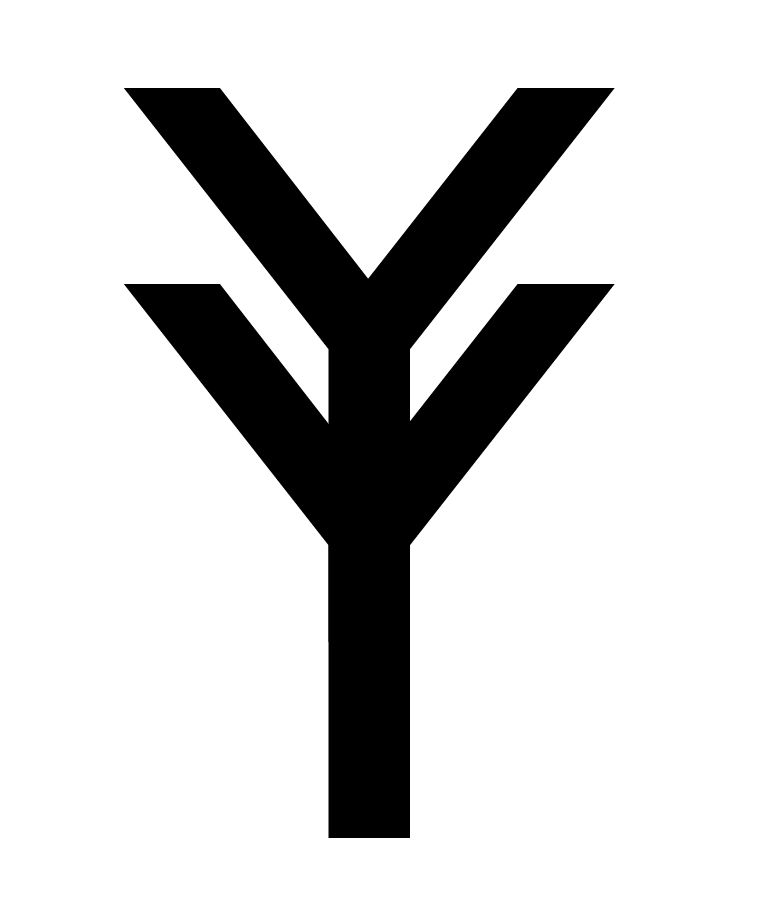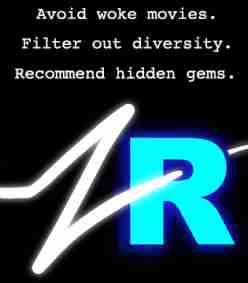Perhaps the Best Metaphor for the Herd Yet
Most people preach fantasies of external scapegoats. These evil figures — the rich, the kings, the Jews, the Whites, the Masons, the Illuminati, UFOs, Satan — seem to be both all-powerful and somehow need us for their power, and both insane and nastily effective.
These are symbols that make us feel better because they seem to contain lots of problems in one easy symbol. Society falling apart? Just fight Satan! When your culture fragments, gas the Jews. Ran out of money? Kill the Whites and take it, or at least, tax the rich until they are poor.
Everyone will “feel” better then because they will no longer be people whose future is uncertain because their decisions are bad, but instead, will be brave crusaders crushing that which oppresses them and reaching toward a mythical state of “freedom” where because everyone can do whatever they want, somehow they will be “happy.”
From another perspective, the philosophy advanced here has a few simple components: (1) human groups flee hard truths and therefore end up with symbolic distractions, (2) there is no shared space of “truth” only individual perceptions, and (3) a society of realistic adaptations plus seeking beauty creates tradition, the best form of human civilization.
We have no Satans; humans are both good and bad (there is no “evil,” or intentional bad, only individuals being selfish, including the worst of them who want subsidies). When error prevails, humans pursue it because it feels good because it is easy, and they destroy themselves in a Shakespearian comedy.
Recent evidence offers support from some of this. In particular, reaching out to a wider social group would in theory make us all agree, but instead creates strife as people get acquainted with other ideas and realize, “thanks, I hate it”:
“When people are more connected with each other, they encounter different opinions more frequently. This inevitably leads to more conflict and thus greater societal polarization,” adds Korbel.
Polarization has always existed, but what is happening now goes far beyond historical patterns. Greater connectivity has led to the formation of fewer but more tightly-knit groups with strongly differing opinions, between which there is hardly any exchange.
Nature tends toward difference more than uniformity. This enables it to cover all variations, instead of converging on a mean, which makes it resilient and discovers new possibilities. However, when too much of a natural impulse toward life converges, a destructive impulse emerges.
Perhaps this is common sense: when there is not enough room to maneuver, kill things until there is. Overpopulation or a variant of it involving high concentration of people results in a death-impulse, much as cells interacting can opt for group suicide.
We see this in nature with calcification such as the solidification of tissue in the face of overpopulation:
The team used computational modeling to uncover the mechanical “tipping point” that determines whether cells can collectively coordinate to spread a disease called fibrosis, an excessive scarring that underlies failure of nearly any organ, and especially in diseases of the liver, lungs, kidneys and heart.
“There’s a sharp transition point. When cells are within a critical spacing that depends on the way their matrix deforms, they can ‘talk’ to each other mechanically through the matrix. Above it, they’re effectively isolated, and below it they interact strongly with one another. This on-off switch behavior is what we see in fibrosis progression: periods of stability followed by rapid scarring.”
The research shows why this phase transition occurs: Fibrous networks like collagen enable long-range mechanical communication in a way that uniform elastic materials cannot.
When too many cells of a certain type get too close together, they produce something like a political machine: a fibrous network that blocks out any other cells. This ends up killing the host organism, but before that point, these cells have absolute power.
Like a cancer or a virus, they are a former life-urge that, frustrated by an excess of life, has become destructive. This seems part of the spectrum of flocking / herding behavior:
Here, we propose an evolutionary model to simulate the adaptation of egoistic social prey to predation given that individual mobility is strictly restrained by the presence of other conspecifics. In our simulated evolutionary races, agents were set to either be confined by neighbours or move to empty cells on the lattice, and the behavioural traits of those less exposed were selected and inherited. Our analyses show that under this crowded environment, cohesive and steady herds were consistently replaced by morphing and moving aggregates via the attempt of border agents to share predation risk with the inner members. This kind of collective motion emerges purely from the competition among selfish individuals regardless of any group benefit.
In a herd, each animal tries to get away from predators by getting closest to the center of the herd; this eventually causes the herd to be unable to move in any coherent direction. As covered here many lugubrious times before, individualism creates collectivism which inverts cognition through externalization and creates collapse through Crowdism.
In the same way, each cell acting toward its own impulses, unless governed by some force which limits the tragedy of the commons and DKE, turns out like democracy: everyone does what they want, no one focuses on direction, and this generates constant conflict until the entire process calcifies into oppositional, hard-set positions which are uncompromising.
Humans like the idea of the “wisdom of crowds” but its actual application seems more nuanced:
Glimt is an open platform that relies on the theory of “crowd forecasting”: a method of making predictions based on surveying a large and diverse group of people and taking an average. “Glimt” is a Swedish word for “a glimpse” or “a sudden insight”. The theory posits that the average of all collected predictions produces correct results with “uncanny accuracy”, according to the Glimt website. Such “collective intelligence” is used today for everything from election results to extreme weather events, Glimt said.
Available in Swedish, French and English, the platform currently has 20,000 registered users; each question attracts an average of 500 forecasters. Their predictions are later sent to statistical algorithms that cross-reference data, particularly the relevance of the answers they provided. The most reliable users will have a stronger influence on the results; this reinforces the reliability of collective intelligence.
Those who show up define the narrative, and platforms like Glimt by their nature attract the most fanatical users who do not mind spending a few hours a week advancing their own ideals. Consequently, what they produce is polling from a small group that receives its opinions in turn from the media and government.
In general, these experiments seem to prioritize the most devoted over the rest, which means that governments are controlled by a small segment of voters, volunteers, bureaucrats, politicians, and “experts.” In the same way, your average Faculty Committee falls prey to a few loud voices.
Most committees, bands, church groups, boards of directors, HOAs, and governments experience the committee problem where members defer to what they think the group will support instead of standing up for what is obviously important. The loudest voices make it easy to nod agreement and move on.
The first rule of being in any human group, after all, is to avoid getting in trouble. To do that, you tailor your views to fit within what others like. Then you do things that are visually important to draw attention to yourself and pacify the group by confirming its biases.
Ironically, a sense of group purpose causes people to defer to that purpose instead of to the group, which allows them to take points of view that are controversial so long as those ideas can ultimately serve the purpose even if inconvenient for the group.
This explains the duality of diversity in complex societies:
We show that the basic tension between miscoordination and inefficient lock-in can help understand a range of economic phenomena and puzzles. For example, our model helps understand why homogeneous societies tend to be more conformist while diverse societies may be caught in a low-trust trap. It also sheds light on why organizations with a strong culture may not incentivize workers to choose more efficient work practices, why diverse societies may suffer more under autocratic regimes, and why weak regimes engage in nation-building while strong regimes create groups with distinct identities.
Weak regimes engage in nation-building, which means trying to unite the committee; strong nations create distinct identities so that they have purpose. Homogenous societies are more “conformist” in the sense of people deferring to those identity, but diverse societies lack trust because all acts are manipulative.
This tells us that in the context of civilization, “communication” may not be a good thing; in fact, it reveals how little people agree because they have little in common. The less they know about each other, the more they can pretend to agree, but once they encounter each other, disagreement is proportional to diversity.
With that disagreement, communication increases because nothing can be done by tacit agreement; everything is a dialogue, a series of meetings, and more manipulation. If you have to communicate, you do not have real unity; when you have shared purpose, communication is rare because people understand the heuristic of what to do.
The same can be said of the urbanization cycle, which finds that at some point, the density of cities impedes function:
“We determined that the rise and expansion of Classic Maya cities resulted from the interaction of climate downturns, intergroup conflict and the presence of strong economies of scale realized through capital investments in agricultural infrastructure,” Kennett said. “These factors promoted the coevolution of urbanism, systemic inequality and patron-client relationships in cities.”
Using that same framework, he added, the researchers also determined that deurbanization set in “when the benefits of urban living no longer outweighed the costs, as environments were degraded near cities and climate amelioration improved the livability of rural areas where people would have more freedom and autonomy.”
A city resembles a large committee, as does a nation, although it defers to a committee of elected, oligarchic, or chosen leaders. When there are too many people on the committee, it is impossible to gain agreement among them, so a smaller committee works better.
For individuals, this means moving to smaller communities where decisions can actually be made, instead of cities which strangle themselves under the inertia of precedent. Those are not only ineffective (and often inefficient) but also create repetitive negative thinking:
“Higher levels of burnout were followed by an increase in repetitive negative thinking, which in turn led to lower self-esteem. Finally, self-esteem instability partially moderated the associations of self-esteem and subsequent pre-sleep worry and burnout at the within-person but not between-person level.”
The results gathered by this team of researchers hint at the possibility that low self-esteem is linked to more repetitive negative thinking, and high self-esteem to less repetitive negative thinking. Rumination (i.e., dwelling on past problems) and worrying about future events, both of which are repetitive negative thinking patterns, appear to in turn contribute to burnout, by perpetuating mental and emotional distress.
Essentially, the researchers found that when students felt better about themselves and held themselves in a higher regard, they appeared to be less prone to burnout, even if they were under similar levels of stress.
Frustration with civilization because it is dying, or with a group because it cannot make decisions, causes an outbreak of repeated negative thoughts. This in turn creates population burnout, at which point people are even less likely to look for realistic or positive solutions.
When the herd gets too dense, it becomes self-destructive, and the first step in this is a lack of ability to make choices. From that, things further branch out to resentment and calcification, eventually making a dead society which decays in stages as its generations age and die out.
Tags: burnout, calcification, civilization, diversity, polarization










